Abstract
Counts of colonies that developed after 4 days on agar medium containing 0.3% xylan and preincubated rumen fluid were similar to counts of xylanolytic bacteria obtained when total culturable counts were multiplied by the percentage of isolates capable of producing acid from xylan. Shortening the incubation period reduced the chance of including satellite colonies of non-xylanolytic organisms in the count. Nearly all of the xylanolytic isolates irrespective of the medium from which they were isolated degraded and utilized xylan extensively. The use of a culture medium containing a high concentration (3%) of xylan is also described. The number of colonies capable of producing clearings in this medium was less than 10% of the total culturable counts. Isolates from such colonies were shown to produce diffusible (extracellular) xylanases.
Full text
PDF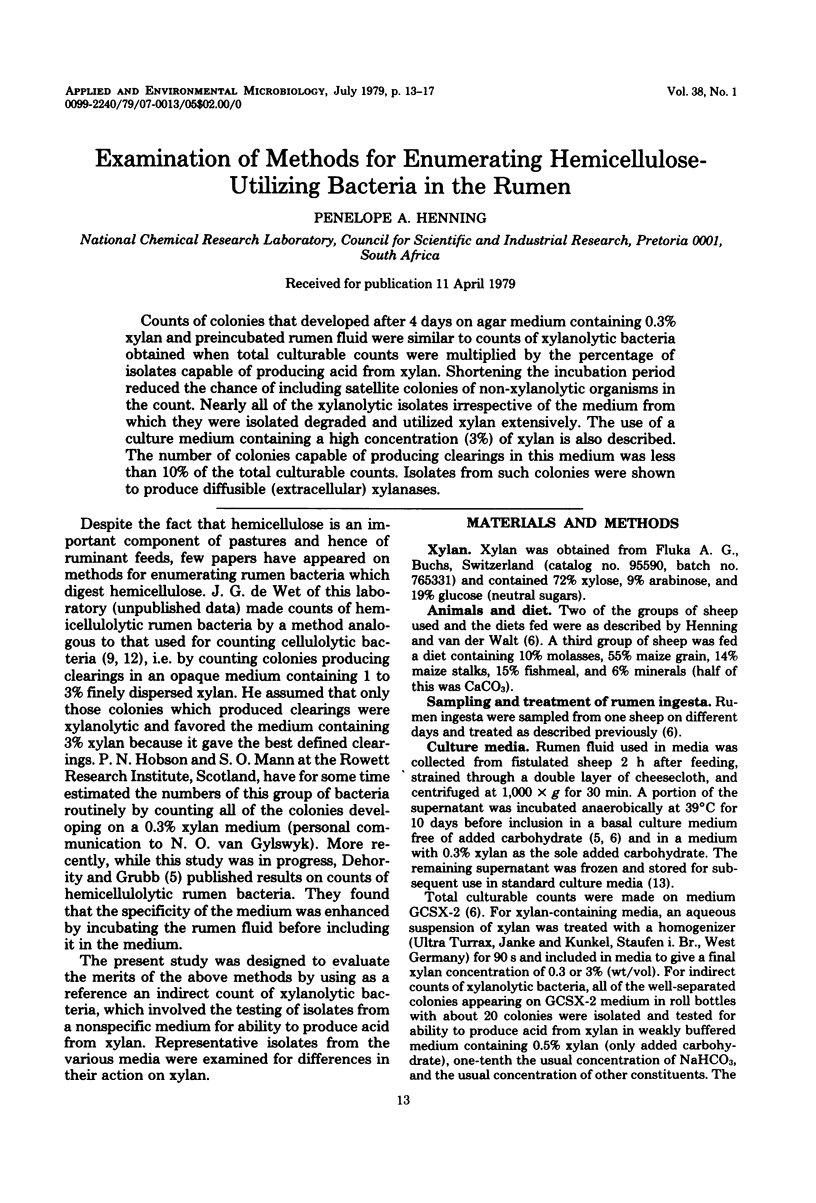
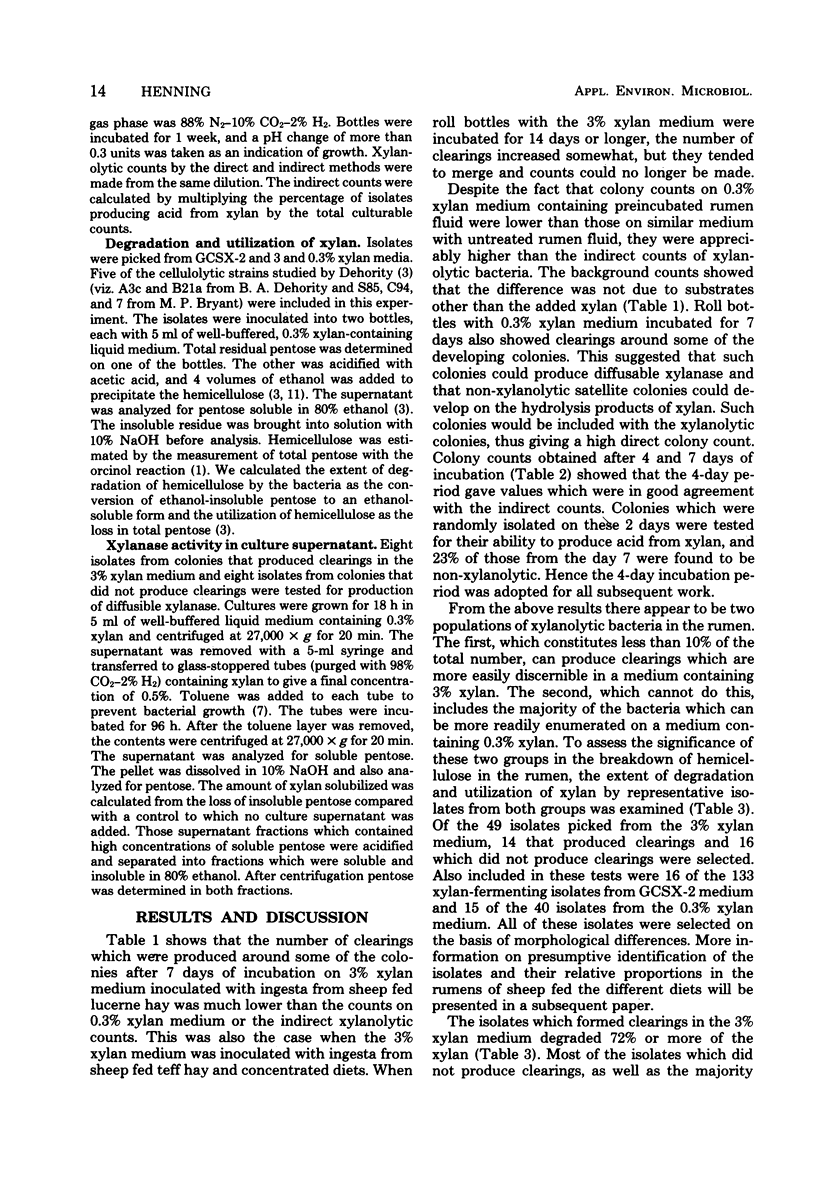
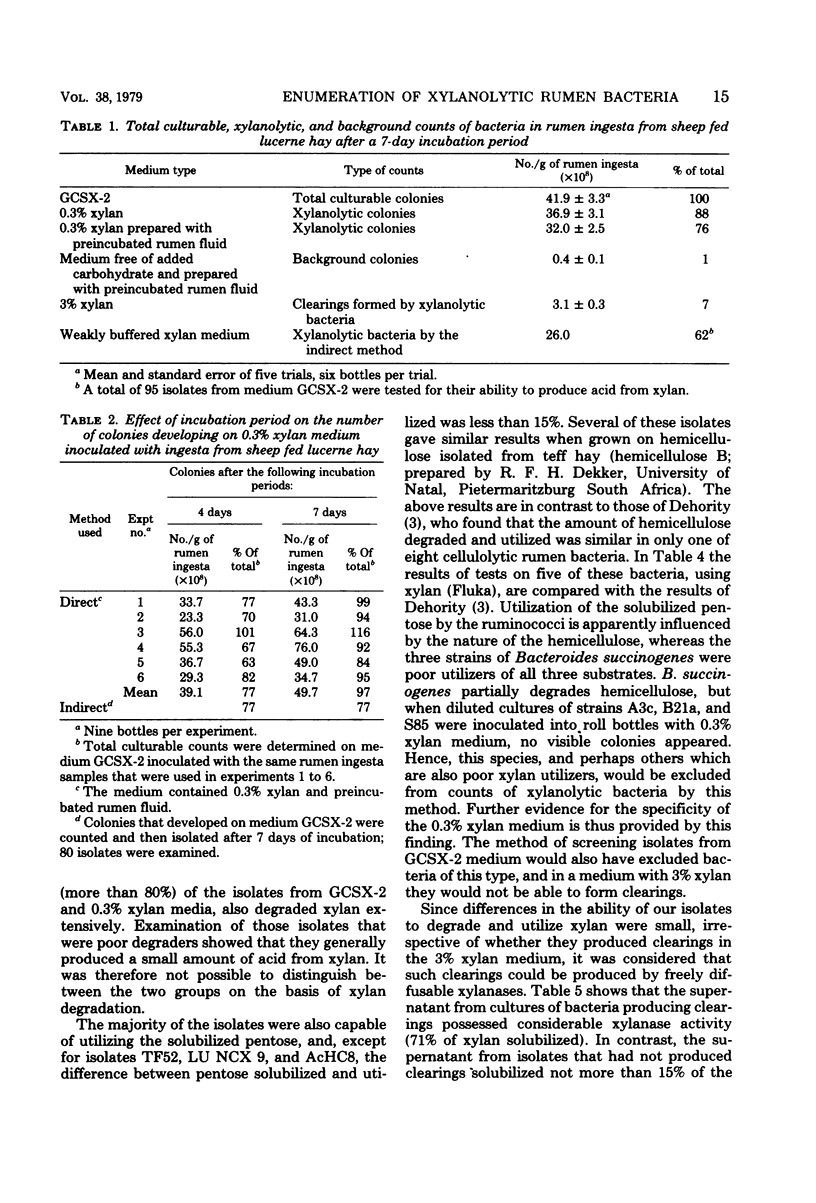
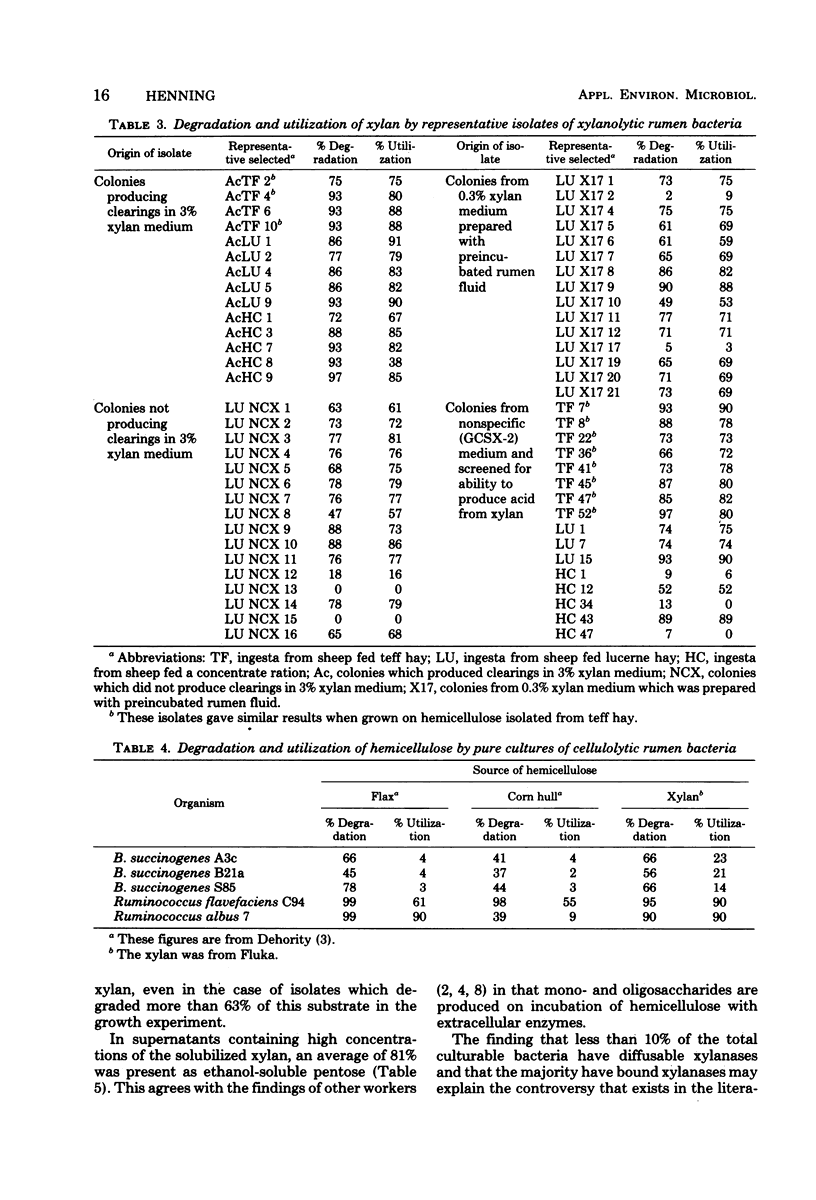
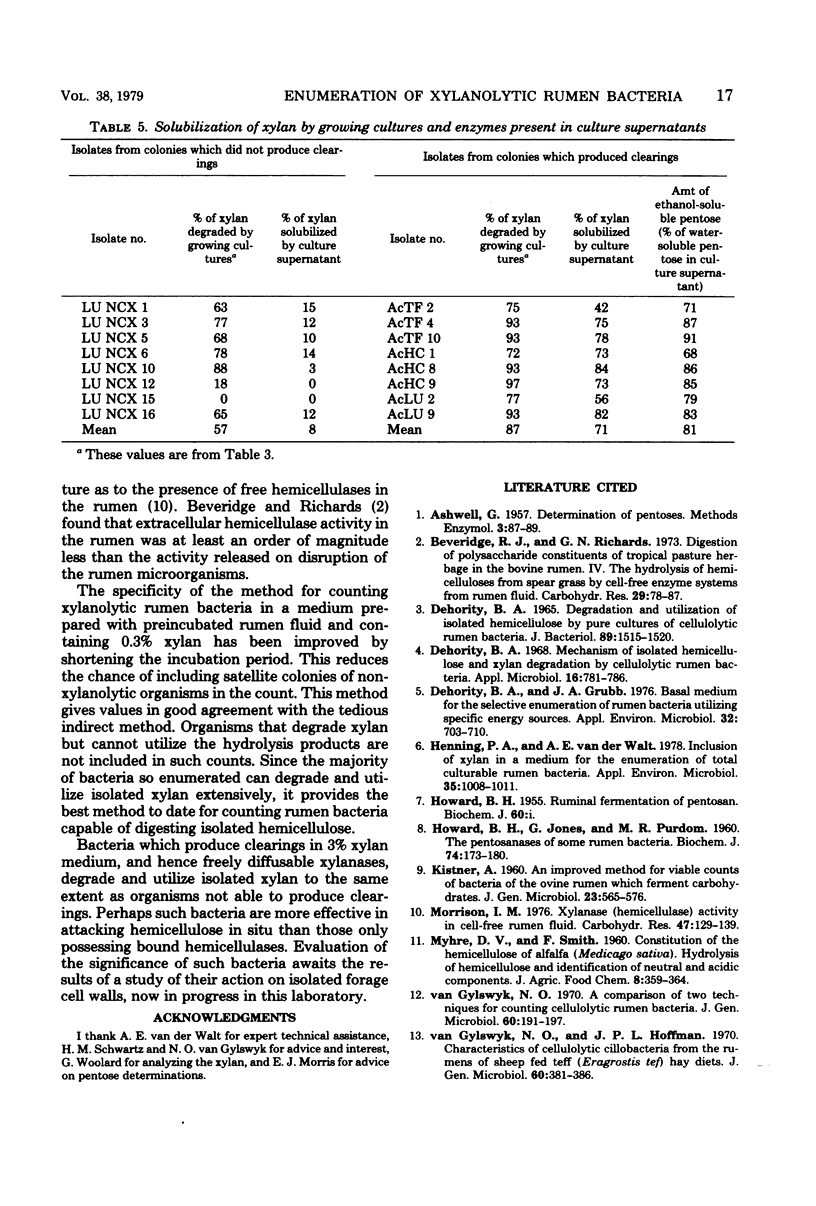
Selected References
These references are in PubMed. This may not be the complete list of references from this article.
- Beveridge R. J., Richards G. N. Digestion of polysaccharide constituents of tropical pasture herbage in the bovine rumen. IV. The hydrolysis of hemicelluloses from spear grass by cell-free enzyme systems from rumen fluid. Carbohydr Res. 1973 Jul;29(1):79–87. doi: 10.1016/s0008-6215(00)82071-6. [DOI] [PubMed] [Google Scholar]
- DEHORITY B. A. DEGRADATION AND UTILIZATION OF ISOLATED HEMICELLULOSE BY PURE CULTURES OF CELLULOLYTIC RUMEN BACTERIA. J Bacteriol. 1965 Jun;89:1515–1520. doi: 10.1128/jb.89.6.1515-1520.1965. [DOI] [PMC free article] [PubMed] [Google Scholar]
- Dehority B. A., Grubb J. A. Basal medium for the selective enumeration of rumen bacteria utilizing specific energy sources. Appl Environ Microbiol. 1976 Nov;32(5):703–710. doi: 10.1128/aem.32.5.703-710.1976. [DOI] [PMC free article] [PubMed] [Google Scholar]
- Dehority B. A. Mechanism of isolated hemicellulose and xylan degradation by cellulolytic rumen bacteria. Appl Microbiol. 1968 May;16(5):781–786. doi: 10.1128/am.16.5.781-786.1968. [DOI] [PMC free article] [PubMed] [Google Scholar]
- HOWARD B. H., JONES G., PURDOM M. R. The pentosanases of some rumen bacteria. Biochem J. 1960 Jan;74:173–180. doi: 10.1042/bj0740173. [DOI] [PMC free article] [PubMed] [Google Scholar]
- HOWARD B. H. Ruminal fermentation of pentosan. Biochem J. 1955 Mar 19;60(ANNUAL):i–i. [PubMed] [Google Scholar]
- Henning P. A., van der Walt A. E. Inclusion of xylan in a medium for the enumeration of total culturable rumen bacteria. Appl Environ Microbiol. 1978 Jun;35(6):1008–1011. doi: 10.1128/aem.35.6.1008-1011.1978. [DOI] [PMC free article] [PubMed] [Google Scholar]
- KISTNER A. An improved method for viable counts of bacteria of the ovine rumen which ferment carbohydrates. J Gen Microbiol. 1960 Dec;23:565–576. doi: 10.1099/00221287-23-3-565. [DOI] [PubMed] [Google Scholar]
- Morrison I. M. Xylanase (hemicellulase) activity in cell-free rumen fluid. Carbohydr Res. 1976 Mar;47(1):129–139. doi: 10.1016/s0008-6215(00)83555-7. [DOI] [PubMed] [Google Scholar]
- van Gylswyk N. O. A comparison of two techniques for counting cellulolytic rumen bacteria. J Gen Microbiol. 1970 Feb;60(2):191–197. doi: 10.1099/00221287-60-2-191. [DOI] [PubMed] [Google Scholar]
- van Gylswyk N. O., Hoffman J. P. Characteristics of cellulolytic cillobacteria from the rumens of sheep fed teff (Eragrostis tef) hay diets. J Gen Microbiol. 1970 Mar;60(3):381–386. doi: 10.1099/00221287-60-3-381. [DOI] [PubMed] [Google Scholar]


